
Model_UN_English
.pdf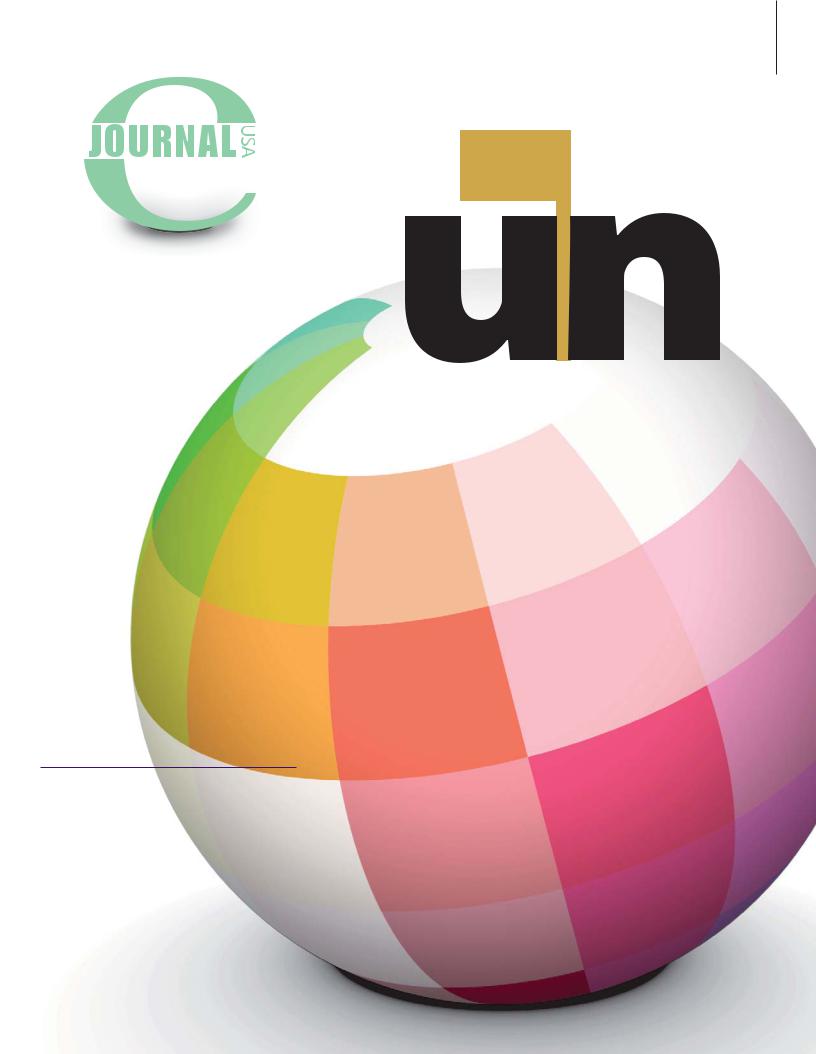
GLOBAL GENERATION
the
model
experience
MODEL UNITED NATIONS
20
top 10 reasons
TO GET INVOLVED
how to18
PARTICIPATE
14
hall of fame
CHECK OUT THESE ALUMNI!
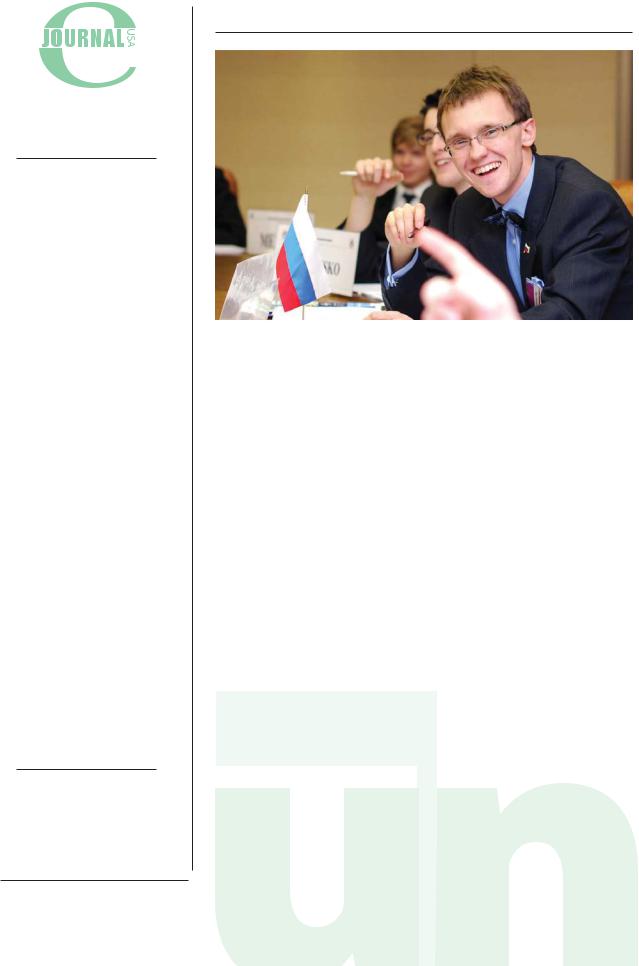
U.S. DEPARTMENT OF STATE
VOLUME 16 / NUMBER 12
Published September 2012
Coordinator, Dawn L. McCall; Executive
Editor, Nicholas S. Namba; Director of
Written Content, Michael Jay Friedman;
Editorial Director, Mary T. Chunko;
Managing Editor, Ashley Rainey Donahey;
Production Chief, Michelle Farrell;
Designers, Dori Walker, Lauren Russell
The Bureau of International Information
Programs of the U.S. Department of State publishes eJournal USA. Each
issue examines a major topic facing the United States and the international community, and informs international readers about U.S. society, values, thought, and institutions.
Each eJournal is published in English, followed by electronic versions in French, Portuguese, Russian and Spanish. Selected editions also appear in Arabic, Chinese and Persian. Each journal is catalogued by volume and number.
The opinions expressed in eJournal USA do not necessarily reflect the views or policies of the U.S. government. The U.S. Department of State assumes no responsibility for the content and continued accessibility of Internet sites to which the journals link; such responsibility resides solely with the publishers of those sites. Journal articles, photographs, and illustrations may be reproduced and translated outside the United States unless they carry explicit copyright restrictions, in which case permission must be sought from the copyright holders noted in the journal.
Editor, eJournal USA
IIP/CD/WC
U.S. Department of State
2200 C Street, NW
Washington, DC 20522-0501
USA
E-mail: eJournalUSA@state.gov
Cover image © Redshinestudio/Shutterstock.com
About This Issue
2011 PSS
“You are here to step into the shoes of UN ambassadors — to draft resolutions, to plot strategy, to negotiate with your allies as well as your adversaries. Your goal may be to resolve a conflict, to cope with a natural disaster or to bring nations together on an issue like climate change. You may be playing a role, but you are also preparing for life. You are acting as global citizens.”
— United Nations Secretary-General Ban Ki-moon to the 2008 Global Classrooms® Model United Nations International Conference
Model United Nations (Model UN) — a simulation where students roleplay UN delegates — is more than just an after-school activity. It is an opportunity to change the world. By stepping into the shoes of UN delegates representing their countries’ interests to the global community, Model UN participants build the knowledge, skills and relationships needed to build a better global future.
Model UN is a transformative experience that deepens participants’ understanding of the world and their place within it. Delegates emerge from Model UN with open minds, fresh ideas and new friends. With the skills they develop in speaking, writing, negotiating and diplomacy, it is no surprise that many go on to become community and world leaders. This issue of eJournal USA explores how young people all over the world are becoming model global citizens through participation in Model UN.
model — The Editors
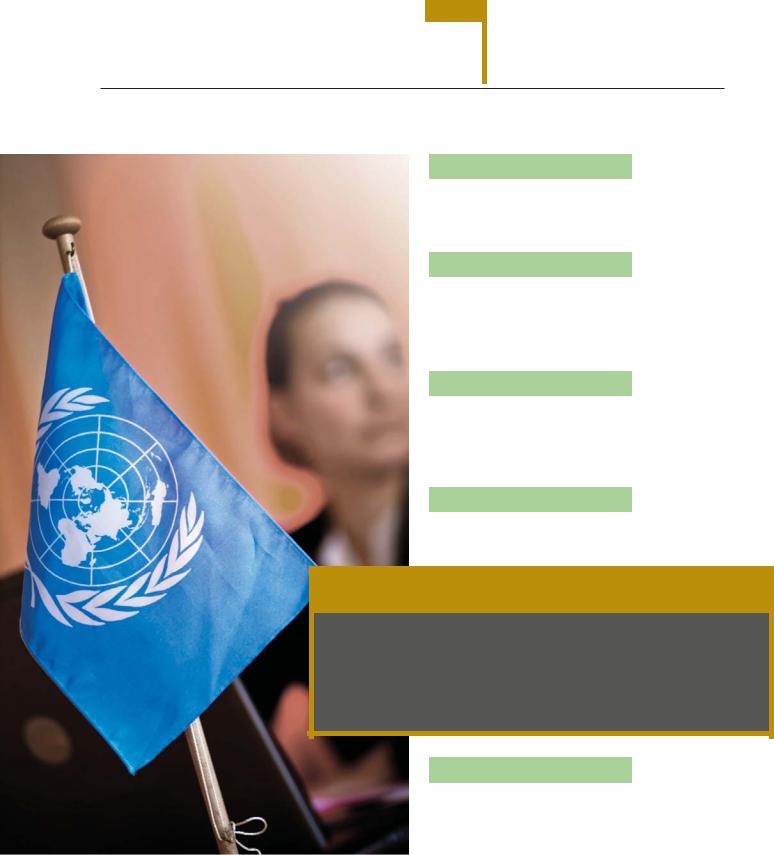
model
GLOBAL GENERATION: THE  EXPERIENCE
EXPERIENCE
Contents
FIRST WORD
WHAT IS MODEL UN? (And Why You Should Care)
No matter what path you choose in life, Model UN can help you get there. 2 |
IN FOCUS
MODEL UN THRIVES IN ARGENTINA
The U.S. Embassy in Buenos Aires has been helping Argentine students impersonate American diplomats in Model UN since 1997. 9 |
SPOTLIGHTS
U.S. diplomat views Model UN as a tool
for peace. 13 | Model UN helps British diplomat pursue his passion. 14 | Canadian-Iranian consultant charts his own course. 16 |
PICTURE THIS
MODEL UN HALL OF FAME
Check out these famous Model UN alumni! 14 |
THE BIG THINK
6
Images AP ©
ACTING FOR CHANGE
Ryan Kaminski, Leo Nevas Human Rights Fellow with the United Nations Association (UNA)
They may be acting, but Model UN delegates are preparing to make a very real impact in the world.
MORE
Infographic: How Does
the United Nations Work? 4 |
How to Participate in Model UN 18 |
Top 10 Reasons to Get Involved with Model UN 20 |
eJournal USA | 1

is what
model
(And Why
You Should
Care)
By Nili Sarit Yossinger
USA-UNA
Student-powered: Model UN is a simulation of the United Nations that teaches participants leadership, diplomacy and communication skills.
Every year,
hundreds of
thousands
of young people all
over the world
participate in Model
United Nations (Model UN)
conferences.
eJournal USA | 2

But what is it?
In Model UN, students act as delegates from various countries serving on UN committees. Participants research issues and formulate negotiating positions based on the real interests of the countries they represent. Depending on the committee they are assigned to, delegates might develop global environmental policies or advise the UN Security Council on economic sanctions.
There are approximately 400 Model UN conferences worldwide and students can participate as early as middle school or as late as graduate school. To prepare for a conference, students thoroughly research the topics assigned to their committee, as well as the geography, culture, politics and history of the country they are representing. They then develop positions on each issue, taking into consideration the particular needs and goals of their country.
I was just beginning college when I first heard about Model UN. One of my professors was taking a group of students to the 2004 National Model UN Conference in New York and asked me to join. He hoped to convince me the experience would not only benefit me academically but would alter my professional pursuits beyond college.
I thought, “Why not?”
I signed up and agreed to be an “ambassador” representing Benin. Though I had spent time outside of the United States, I had no experience with international politics and knew very little about the United Nations (UN).
After months of research, I arrived at the conference with no idea what to expect from my fellow diplomats. I entered the General Assembly room and looked around at the 300-plus professionally dressed students, and suddenly I felt nervous. Would I be able to represent Benin adequately? Would I be able to speak in front of all of these people?
Yet, when the president called the room to order, we were all transformed. It really felt like we had become ambassadors from every continent, ready to resolve international conflict.
Learn more about what Model
UN is all about!
http://goo.gl/udeqU
As we talked about the impact of terrorism on human rights or the humanitarian concerns in war-torn countries, I recognized the greatest challenge to resolving conflict. It was not a lack of time, money or energy. It was the difficulty of learning to negotiate and compromise with people from every background, culture, religion and perspective. Model UN not only helps us to face that challenge, but to overcome it.
The bottom line is there is no better way to understand how the world works than to try walking in the shoes of other countries. From the moment you set foot in a Model UN conference, you are the diplomat and you must represent your country’s interests in the global community.
What do you get out of it?
My Model UN experience was transformative. By the end of the week, I knew I wanted to make a difference in the world. I pursued my classes with a new passion. I learned everything I could about international children’s issues, peace building, and the functions of different international organizations. I participated in two more Model UN conferences, representing Egypt and then Albania, before joining the staff of American Model United Nations International in Chicago. Now I have the pleasure of training the next generation of Model UN all-stars and international leaders.
Model UN is the perfect opportunity to get involved, get passionate, and understand the world around you. The skills you will gain in conflict resolution, public speaking, diplomacy and writing — and the friendships you will build — will last you a lifetime. No matter what path you choose in high school, college and beyond, Model UN can help you get there! 
Nili Sarit Yossinger most recently worked with the United Nations High Commissioner for
Refugees in Washington. She currently serves as president of the General Assembly on the Executive Committee of American Model United Nations International in Chicago, Illinois.
eJournal USA | 3
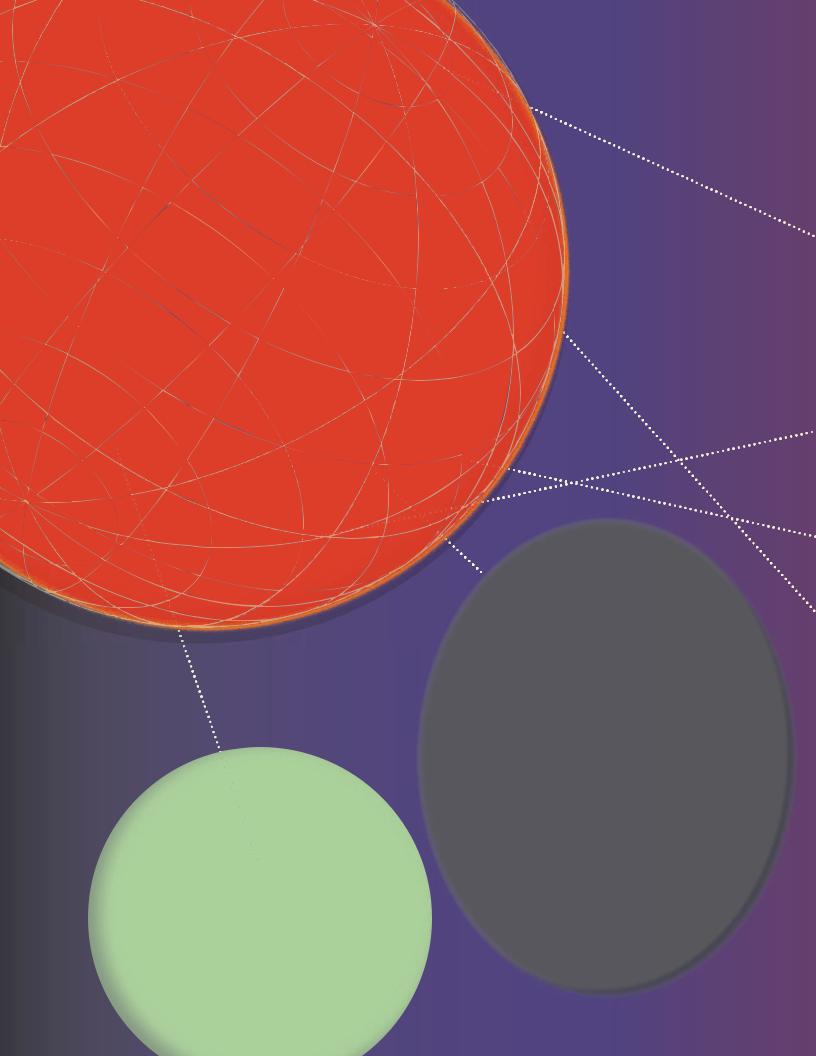
work? |
|||
|
|
|
THE |
|
|
NATIONS |
|
|
DOES |
|
|
UNITED |
|
|
|
HOW |
|
|
|
UN agencies
regulate standards in areas
as diverse as weather (the World Meteorological Organization) and telecommunications
(the International
With 54 rotating members, the
Economic and Social Council
ECONOMIC AND SOCIAL COUNCIL (ECOSOC)
addresses the world’s economic, social and environmental
challenges.
eJournal USA | 4
SPECIALIZED AGENCIES, RELATED PROGRAMS, FUNDS AND OTHER UN ENTITIES
Telecommunication
Union), as well as the
World Bank and
other development and
financial organizations.

|
INTERNATIONAL COURT |
|
SECURITY COUNCIL With |
OF JUSTICE (ICJ) |
|
The main judicial body of |
||
five permanent |
||
the UN, based in |
||
members (the United |
||
The Hague, Netherlands. |
||
|
||
States, China, Russia, the |
|
|
United Kingdom and France) |
|
|
and 10 rotating |
|
|
member countries, |
|
|
the Security Council is charged |
|
|
with maintaining |
|
|
international peace |
|
|
and security. |
|
UN GENERAL ASSEMBLY (UNGA)
Comprising all 193 members
of the United Nations,
the UN General Assembly (UNGA) is
the main deliberative, policymaking and representative body of
the United Nations and is responsible for subsidiary bodies (such as the UN Human Rights Council), programs and
SECRETARIAT Led funds (such as the UN Development
Programme), research institutes and
by the UN secretary-general,
other entities.
the Secretariat has more
than 44,000 staff members who carry out the day-to- day operations of
the United Nations all over
the world.
Learn more about the United Nations at UN Cyberschoolbus! http://goo.gl/uLAux
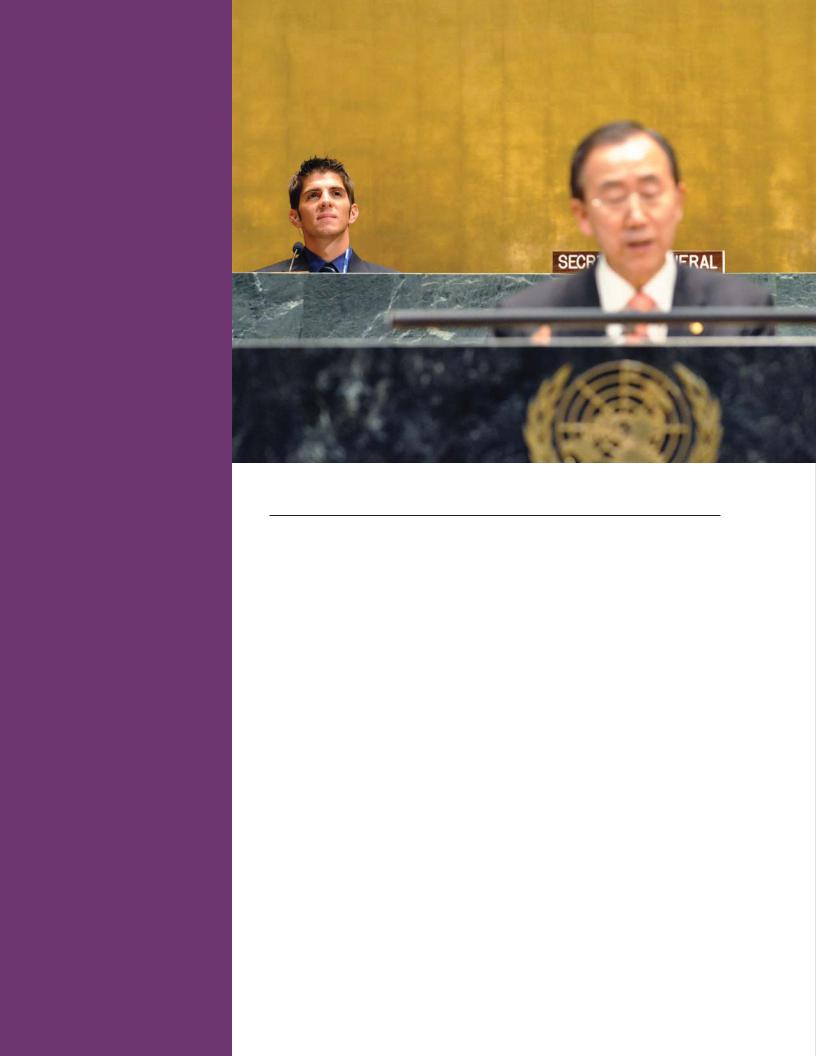
acting
FOR
CHANGE
By Ryan Kaminski
Stanic Milan
On the shoulders of giants: Model UN Deputy Secretary-General Ryan Kaminski (left) looks on
as UN Secretary-General Ban Ki-moon addresses Model UN delegates at the 2009 UNA-USA Global Classrooms Model UN Conference at UN Headquarters in New York.
A friend of mine who
was trying to understand Model
UN once asked me:
“It’s basically just
like acting, right?”
eJournal USA | 6
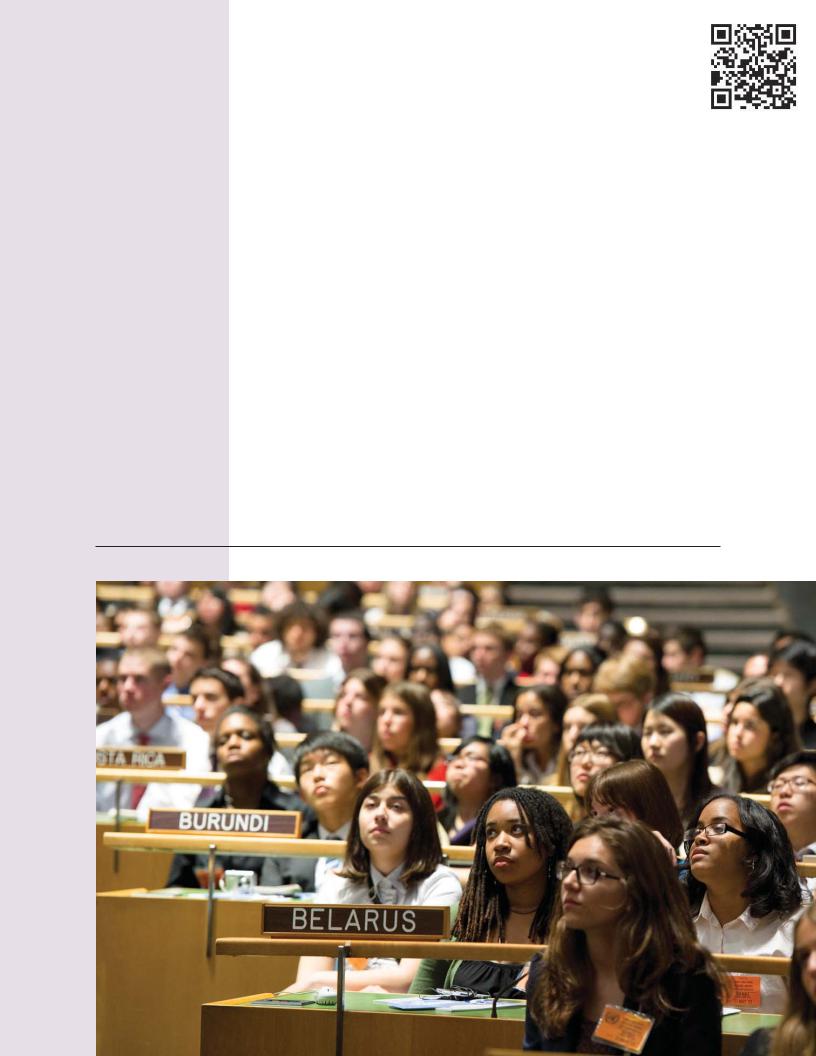
The simple answer is yes. In Model UN, young people act like high-level diplomats representing the United Nations’ 193 member states.
But Model UN is so much more.
My Model UN Experience
Arriving at my first Model UN conference in secondary school, I was nervous. Actually, I was really nervous. But when the registration desk handed me my country’s placard, something changed. Suddenly, I felt like I was in the driver’s seat, and that I had just been instantly promoted to the rank of ambassador.
Over the course of the conference, I evolved from wary observer to highly engaged stakeholder. I learned to identify potential friends and allies, compromise with opponents, and craft passable draft resolutions in collaboration with fellow delegates. I made new friends and learned about schools, cities and countries very different from my own.
Watch the film Decorum to learn more about Model UN: http://goo.gl/uSP0q
As my stage fright evaporated, I realized that I was a part of something much bigger than myself. My fellow Model UN delegates and I formed a community with a shared commitment to international cooperation, diplomacy, mutual respect and compromise.
Energized by many subsequent conferences, I continued my Model UN career in college. Rather than participating only as a delegate, I also helped organize and even run a few conferences.
When tasked with running a simulation of the UN Human Rights Council (UNHRC), I was able to explore the mechanics of the UN’s premier human rights organ. Along with sheer excitement, the position also came with new responsibilities. In particular, I was required to mentor four other committee staff members, as well as research and write clear background briefs on each of the topics the committee would consider. It was hard work, but it paid off when I got to watch the committee spring to life during my school’s annual Model UN conference.
Coming together: Hundreds of high school students from 23 countries around the world attend the opening ceremony of a UNA-USA Global Classrooms Model UN Conference at UN Headquarters in New York.
USA-UNA
eJournal USA | 7
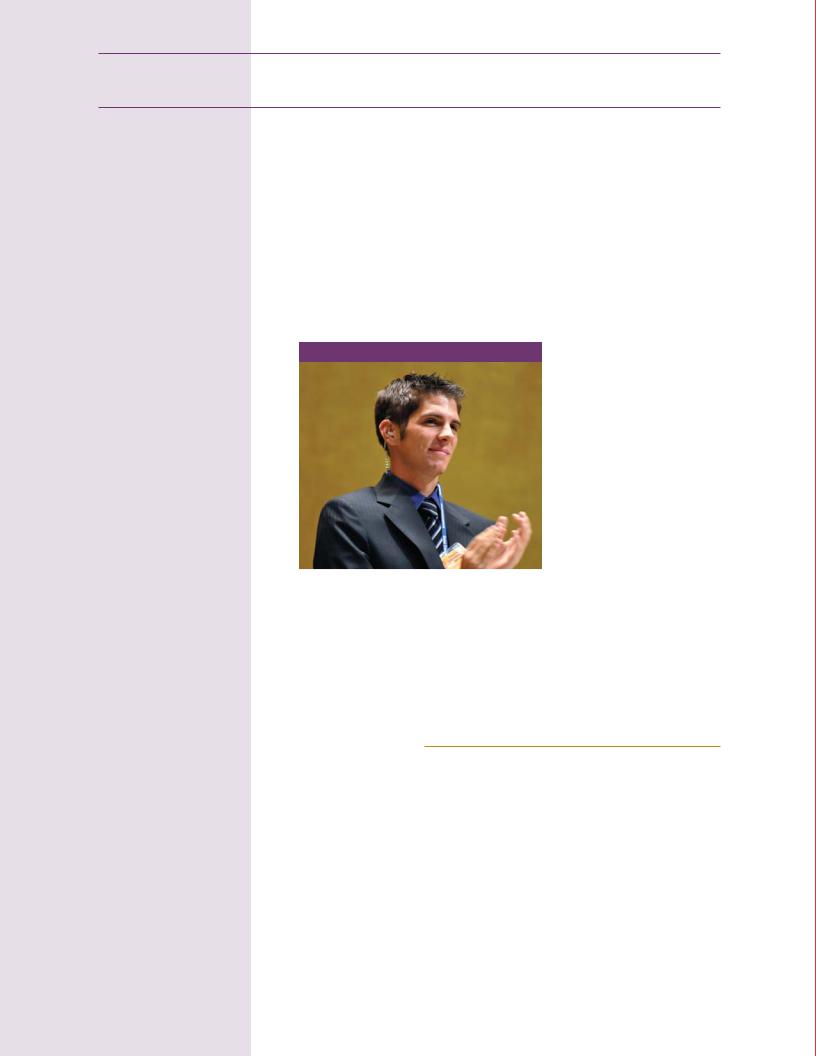
Model UN delegates are preparing to make a very REAL impact in the world.
Later, I had the chance to moderate a simulation of the entire UN General Assembly (UNGA) of almost 400 students at UN headquarters (the real one!) in New York. To succeed, I had to be organized, efficient and fair — ensuring that all delegations present, from Japan to Togo, were given an equal voice in the committee’s deliberations.
While the task was admittedly challenging, it taught me how to carry out complex projects, work constructively with other conference staff, and meet critical deadlines. After all, Model UN delegates usually have only a day or two to tackle
major global problems!
Making
the Transition
Serving as a Model UN delegate and conference organizer provided a practical and exciting channel for me to learn more about international affairs. I researched and wrote about topics ranging from climate change and nuclear nonproliferation to women’s rights and the spread
of HIV/AIDS. Representing a diverse array of countries such as the Netherlands, Saudi Arabia, Republic of the Congo, Spain and the United States was invaluable in helping me understand how different countries and cultures approach these issues.
As a student, my coursework definitely benefited since many of my school assignments concerned topics I had already debated in-depth during Model UN conferences. Similarly, when applying for internships and jobs, interviewers have been impressed with the fact that I have participated in and facilitated simulated sessions of major international institutions such as the UNHRC and UNGA.
After graduating from university, Model UN even helped me to land my first job abroad. When I started working as a Fulbright English teacher in Hong Kong, I learned that my assigned school chose me because they valued my knowledge of Model UN,
and my experience engaging a wide diversity of people and cultural perspectives.
Since my year in Hong Kong, I have been fortunate to pursue many new international opportunities
— including one role where I attended real-life UN committee sessions with a real UN ambassador. In each instance, the skills and confidence I gained through my Model UN experience have helped me to be successful.
Acting on the World Stage
William Shakespeare wrote, “All the world’s a stage, and all the men and women merely players.” While the young men and women of Model UN may be pretending, they are also learning to “act” effectively on the world stage. By increasing their knowledge of international affairs, expanding their worldview and developing vital leadership skills, Model UN delegates are preparing
to make a very real impact in the world.
Take it from me: Model UN can boost self-confidence, improve understanding of major international issues and, most importantly, develop capacity for leadership. If more young people participate in Model UN, the world will likely see not only more great leaders, but ultimately more happy endings. 
Ryan Kaminski, 26, is currently the Leo Nevas Human Rights Fellow with the United Nations Association (UNA). Previously he worked as a research associate with the Council on Foreign Relations’ International Institutions and Global Governance program. He was awarded the Jal Pavry Award for research in international peace and understanding from the Columbia University School of International and Public Affairs in 2009 and the Leo Nevas Young Advocate for Human Rights Award in 2011. Kaminski was a Fulbright Fellow in Hong Kong from 2008 to 2009 and also worked with Papua New Guinea’s Mission to the UN from 2009 to 2011. He obtained his bachelor of arts degree from the University of Chicago and master’s degree in international affairs from Columbia University.
eJournal USA | 8
